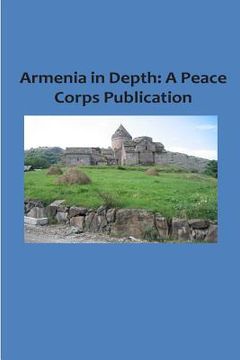Synopsis "Armenia in Depth: A Peace Corps Publication"
Although repeatedly invaded, conquered, and ruled by others, Armenia has preserved its national and cultural identity for more than 2,600 years. Armenians take great pride in the fact that for a few generations during the time of Pompeii and Julius Caesar, Armenia was powerful enough to challenge the Roman Empire. Its subsequent history was marked by many struggles for independence and by the domination of many foreign powers. The foundations of Armenian civilization were laid in the sixth century B.C. on the ruins of the ancient kingdom of Urartu. In about 550 B.C., the area became a province of Persia's Achaemenian Empire. In 331 B.C., Armenia was overrun by Alexander the Great and, in 301 B.C., it became part of the Seleucid Empire. With Rome's conquest of the Seleucids in 190-189 B.C., Armenia was divided into two provinces: Greater Armenia and Sophene. The nation was reunified by King Tigranes II (95-55 B.C.) and reached the height of its power, extending its dominion to the neighboring regions of Albania and Atropatene (both now in Azerbaijan), Syria, and part of Parthia. In 66 B.C., however, Tigranes was forced to cede territory and form an alliance with Rome. Armenia subsequently became the focus of the Roman and Parthian-Persian rivalry that lasted until the third century A.D. By converting Arsacid King Tiridates III, the ruler of Parthia, to Christianity, St. Gregory the Illuminator brought about Armenia's permanent break from Persia and the East. Christianity became the official religion of the Armenian state in A.D. 300. In about A.D. 390, the country was divided into Byzantine Armenia and Persian Armenia The annexation of Armenia by the briefly revived Byzantine Empire in the 11th century was followed by invasions of the Seljuk Turks, who brought the country under Turkish domination in the last quarter of the 11th century. In the 13th century, Armenia, much of which was at that time part of Georgia, was overrun by the Mongols. Beginning in the 16th century, Armenia was once more the object of contention between two hostile powers, the Ottoman Empire and Iran. This situation continued-with a brief interlude of Armenian independence from 1722-30-through the 18th century. During this time, the country became a trade link between the East and Europe. The advance of Russia into the Caucasus early in the 19th century inspired a renewal of Armenian culture. Following the Russo-Turkish War of 1877-78 and the Treaty of San Stefano, the issue grew into the "Armenian question." But attempts to effect reforms resulted only in a series of Turkish and Russian massacres of the Armenian populace between 1894-1917. Following their conquest by Russia in 1916, Armenia, Georgia, and Azerbaijan formed the Transcaucasian alliance, but within a few months the alliance was dissolved. A series of political upheavals, including the brief appearance of an independent Armenian republic in 1920, eventually led to the reunion of the three states as the Transcaucasian Soviet Federated Socialist Republic, which was incorporated into the Soviet Union in 1922. In 1936, the new Soviet Constitution gave Armenia the status of a republic of the USSR.

